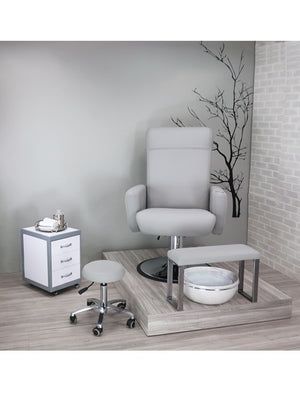Disposable Hypodermic Needles: Enhancing Infection Control Practices in Healthcare Settings

In the realm of healthcare, infection control stands as a cornerstone of patient safety and well-being. In healthcare settings worldwide, the risk of healthcare-associated infections (HAIs) looms large, posing significant challenges to both patients and healthcare providers. Among the many tools and strategies employed to combat HAIs, disposable hypodermic needles emerge as a vital component in the arsenal of infection control practices. These seemingly simple instruments play a profound role in minimizing the risk of cross-contamination, reducing the transmission of bloodborne pathogens, and safeguarding the health of patients and healthcare workers alike. In this comprehensive exploration, we delve into the pivotal role of disposable hypodermic needles in enhancing infection control practices in healthcare settings.
The Imperative of Infection Control
Infection control lies at the heart of patient safety and quality care in healthcare settings. HAIs pose a significant threat to vulnerable patient populations, professional pedicure chair including those undergoing medical procedures, receiving long-term care, or battling chronic illnesses. Moreover, healthcare-associated infections can prolong hospital stays, increase healthcare costs, and even result in severe complications, including sepsis and death.
In response to these challenges, healthcare facilities implement rigorous infection control protocols aimed at preventing the spread of pathogens, minimizing the risk of contamination, and ensuring a safe environment for patients and healthcare workers. Central to these efforts is the adoption of disposable medical devices, including hypodermic needles, which offer a critical line of defense against the transmission of infectious agents.
Disposable Hypodermic Needles: A Paradigm of Safety
The introduction of disposable hypodermic needles heralded a transformative shift in medical practice, offering a safer and more hygienic alternative to traditional reusable needles. Unlike their predecessors, which required sterilization and reuse, disposable needles are designed for single-use, ensuring sterility and minimizing the risk of cross-contamination between patients.
The significance of disposable hypodermic needles in infection control cannot be overstated. By adopting a single-use model, healthcare providers eliminate the potential for residual contamination, needlestick injuries, and transmission of bloodborne pathogens, such as HIV, hepatitis B, and hepatitis C. Moreover, disposable needles mitigate the logistical challenges associated with needle sterilization, storage, and tracking, streamlining clinical workflows and enhancing efficiency in healthcare delivery.
Engineering for Safety and Precision
Behind the seemingly simple design of disposable hypodermic needles lies a symphony of precision engineering and meticulous craftsmanship. From the sharpness of the needle tip to the quality of the material, every aspect is carefully engineered to optimize performance, minimize patient discomfort, and ensure the integrity of infection control practices.
Modern disposable needles feature ultra-sharp, beveled tips that penetrate the skin with minimal resistance, reducing patient pain and tissue trauma during injections and blood draws. Advanced manufacturing techniques, including laser sharpening and electrochemical polishing, create needles of unparalleled sharpness and precision, facilitating accurate medication delivery and blood collection while minimizing the risk of complications and adverse events.
Safety Innovations: Protecting Patients and Healthcare Workers
In recent years, the emphasis on patient and healthcare worker safety has driven the development of innovative features and technologies in disposable hypodermic needles. Safety-engineered needles, equipped with retractable or shielding mechanisms, offer an additional layer of protection against accidental needlestick injuries—a prevalent occupational hazard in healthcare settings.
Furthermore, advancements in needle design have led to the introduction of passive safety features, such as automatic retraction upon needle withdrawal or encapsulation within protective sheaths. These safety innovations not only protect healthcare workers from the risks of needlestick injuries but also safeguard patients from potential harm, ensuring a higher standard of care and accountability in medical practice.
Environmental Considerations and Sustainability
While disposable hypodermic needles have undoubtedly improved infection control practices and patient safety, their widespread use has raised concerns about plastic waste generation and environmental impact. As healthcare systems worldwide prioritize sustainability and environmental stewardship, efforts are underway to explore eco-friendly alternatives and recycling programs for disposable medical supplies.
Manufacturers and healthcare institutions are increasingly embracing biodegradable materials and closed-loop recycling initiatives to minimize the environmental footprint of disposable needles while maintaining the highest standards of patient care and safety. By prioritizing sustainability alongside infection control practices, healthcare stakeholders can forge a path towards a more environmentally conscious and ethical healthcare system.
Conclusion: Empowering Infection Control in Healthcare
In conclusion, the role of disposable hypodermic needles in enhancing infection control practices is undeniable. These innovative instruments embody a commitment to patient safety, quality care, and public health—a testament to the transformative power of medical technology and innovation.
By adopting disposable needles, healthcare providers can mitigate the risk of HAIs, protect patients and healthcare workers from infectious agents, and uphold the highest standards of infection control in clinical practice. As we continue to navigate the challenges of infectious disease and healthcare-associated infections, disposable hypodermic needles will remain indispensable tools in the fight against infection, ensuring the delivery of safe, effective, and compassionate care to patients around the world.
Share this post:
In the realm of healthcare, infection control stands as a cornerstone of patient safety and well-being. In healthcare settings worldwide, the risk of healthcare-associated infections (HAIs) looms large, posing significant challenges to both patients and healthcare providers. Among the many tools and strategies employed to combat HAIs, disposable hypodermic needles emerge as a vital component…
Recent Posts
- The Web Edge Guiding System: A Comprehensive Guide to Advanced Alignment Technology
- A Deep Dive into Blue Top HGH Reviews: What You Need to Know
- The Wuthering Wave Online: Navigating the Virtual Realm of Dynamic Interaction
- Double Aspheric Lenses: The Pinnacle of Modern Optical Design
- How to Download TikTok Videos in Seconds: A Step-by-Step Guide